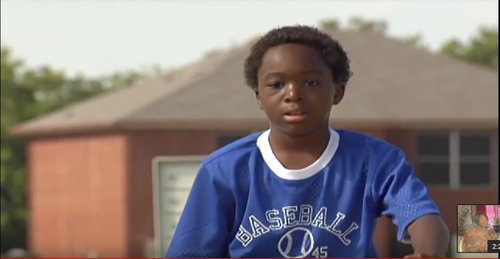
(May 2019) Growing up with Sickle Cell disease, Desiree Ramirez learned all about how to deal with pain. She was in and out of the hospital for transfusions and emergency room visits. “Certain parts of my body would hurt. If the crisis was bad, my whole body would hurt. Mainly in my back, my legs, and my arms. I told my mom it felt like somebody was beating me with a hammer.”
Desiree was diagnosed with Sickle Cell before she was five. She endured the pain and the interruptions to normal life, and finished high school. She tried to move away to college but her need for emergency medical care made it impossible. Desiree came to accept that her life would have to be lived with limits, and that it likely would be cut short.
“Before the transplant, the sickle cell broke my body down so much I couldn’t get out of bed.”
So, when her doctor at the University of Kansas Cancer Center told her about the possibility of an adult stem cell transplant, she wasn’t sure what to think. A new procedure had been developed that would allow Desiree to receive a bone marrow adult stem cell transplant to treat the sickle cell.
Her family was tested but no one matched her DNA closely enough to donate. Amazingly, doctors found two donors outside of her family that were a match. Even though she would be the first adult patient at the KU Cancer Center to receive a bone marrow adult stem cell transplant for sickle cell disease, she knew she had to try it.
Dr. Sunil Abhyankar performed the adult stem cell transplant March 16, 2016. “She’s doing great. She’s really doing great.”
Dr. Abhyankar is the Medical Director of Pheresis and Cell Processing as well as the Director of the Midwest Stem Cell Therapy Center. “If this transplant is successful, and we hope it will be, then it can cure the disease long-term,” he said.
Stem Cell Transplant Reverses Sickle Cell Disease in Adults
“Life is a lot better for me. It’s like I’m a new person.”
Now, two years after the transplant, Desiree’s life is completely different. “After my adult stem cell transplant, life is a lot better for me. I have more energy, I’m not in constant pain or having to worry about that excruciating pain from Sickle Cell. Before the bone marrow transplant, I couldn’t really walk a lot or do a lot because the Sickle Cell broke my body down so much. I couldn’t really get out of bed,” said Desiree.
“It’s like I’m a new person,” she said.
Fact Sheet: Adult Stem Cell Research and Transplants

What’s next for Desiree? She wants to use some of her experience to help others.
“I plan on going to school to become a nurse. I have to take a test before I can get into nursing school, so I have been spending a lot of my days studying, trying to prepare to take that test so I can pass it.”
Desiree says she wants others to have a chance at a full life, just like her. “I want to be a nurse because I really want to help people that are sick. I know what it’s like to be sick all the time. I want to see people get well,” Desiree said.
More about Desiree’s battle with Sickle Cell Disease – KU Cancer Center
